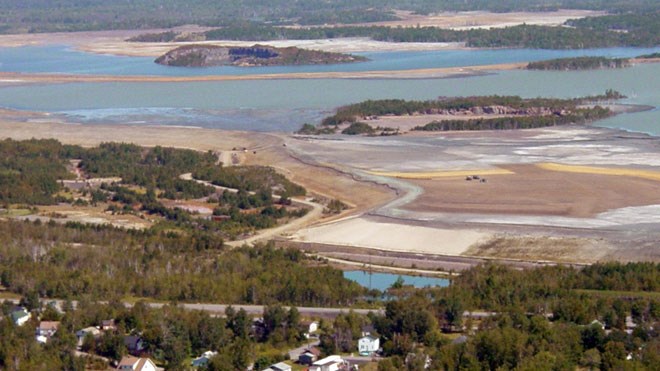“They will likely scrape up the whole area and put it back in the new retention area,” Beckett said.
But he added that such incidents, while incredibly damaging to the local environment, are very rare.
“I think they are safe for the most part, but there are exceptions,” he said.
When mining companies discharge their mineral waste from their mills — called tailings — they mix it in water and deposit it in ponds, where the heavy metals settle to the bottom.
In a modern mining operation, water that hasn't evaporated eventually makes its way to a treatment facility.
Beckett has worked on adding plant cover to tailings ponds to make them more resistant to environmental changes, such as heavy rainfall or droughts, and create added economic opportunities.
He said Inco first explored the idea of reclaiming tailings ponds with vegetation in 1948.
In one recent project, Beckett and his research team have added organic material, such as pulp and paper waste, and compost, to tailings ponds to create the soil needed for crops.
The plan, he said, is to grow crops that can be used for bio-fuels at tailings ponds, which can often cover vast areas.
The plant cover, he said, also prevents sediments from escaping, and acts as a natural filter.
Most modern tailings ponds are built with dams, he said, but there has been a movement to dump tailings in deep lakes — a practice that was more common with older mines.
“The jury is still out as to whether or not things should go back into deep lakes,” he said. “It's very controversial.”
For Beckett, how mine tailings are managed can vary from one operation to the next. In some cases, it might make sense to dump tailings in deep lakes, he said, and in others man-made ponds are the best solution.
As for abandoned mines, he said some companies have returned to long forgotten sites to reclaim valuable minerals.
The companies are then responsible to ensure the sites meet the latest environmental standards.
In 1999 the Ministry of Northern Development and Mines established the Abandoned Mine Rehabilitation Program with a $27-million fund to rehabilitate Crown-held abandoned mine sites over a four-year period.
The program has been renewed several times since.
More recently, the City of Greater Sudbury extended its award-winning brownfield strategy to cover hundreds of former mine sites in the region.
The strategy offers landowners different incentives, such as tax breaks, to rehabilitate industrial properties.
Join Sudbury.com+
- Messages
- Post a Listing
- Your Listings
- Your Profile
- Your Subscriptions
- Your Likes
- Your Business
- Support Local News
- Payment History
Sudbury.com+ members
Already a +member?
Not a +member?
Sign up for a Sudbury.com+ account for instant access to upcoming contests, local offers, auctions and so much more.
